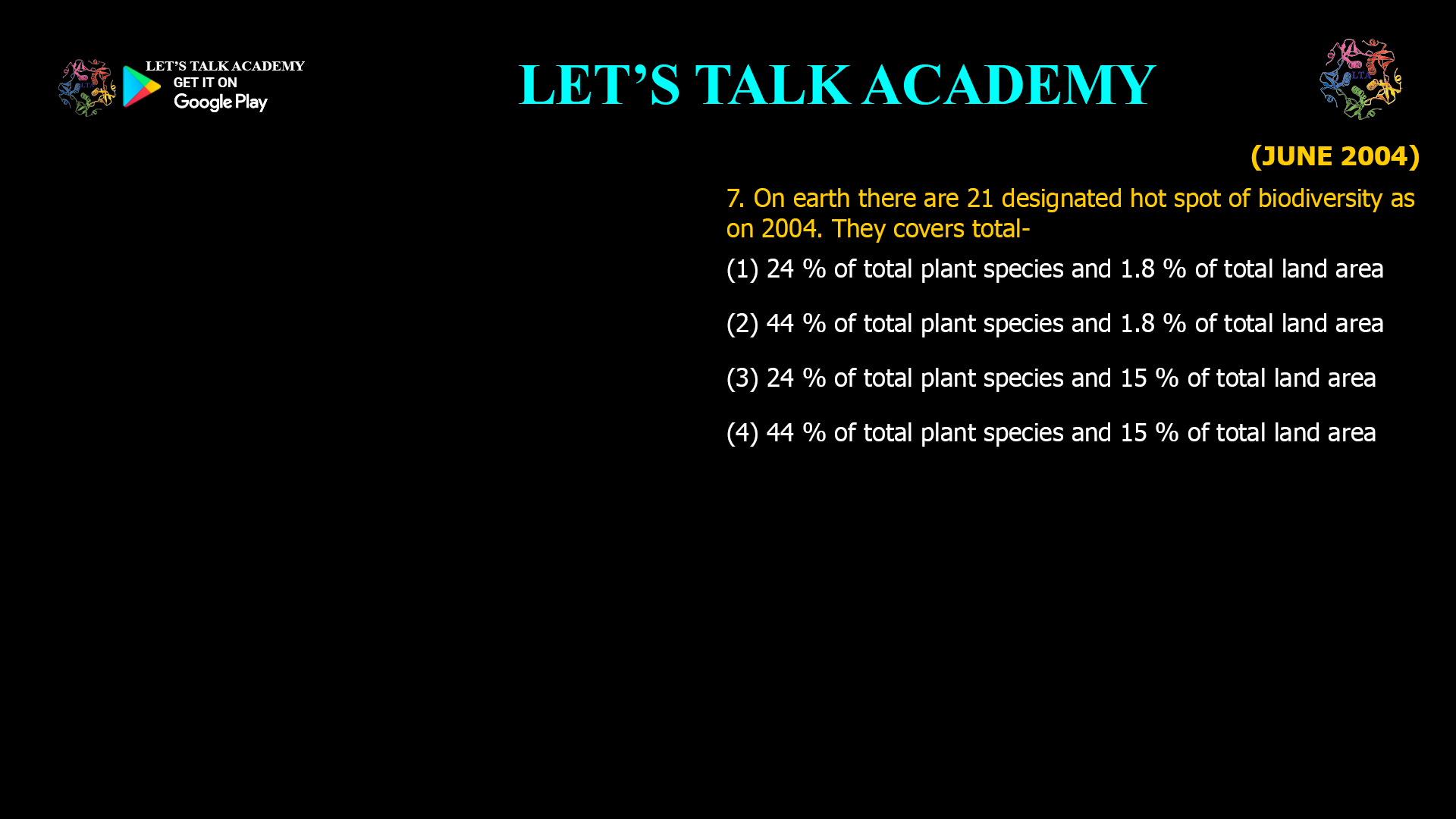- On earth there are 21 designated hot spot of biodiversity as on 2004. They covers total-
(1) 24 % of total plant species and 1.8 % of total land area
(2) 44 % of total plant species and 1.8 % of total land area
(3) 24 % of total plant species and 15 % of total land area
(4) 44 % of total plant species and 15 % of total land areaWhat Qualifies as a Biodiversity Hotspot?
A region must meet two main criteria to be designated as a biodiversity hotspot:
-
At least 1,500 endemic vascular plant species (more than 0.5% of the world’s total).
-
Loss of at least 70% of its original habitat, meaning only 30% or less of its natural vegetation remains.
Global Coverage of Biodiversity Hotspots
Land Area
Despite their ecological importance, biodiversity hotspots cover a surprisingly small portion of the Earth’s land surface. According to Conservation International and major scientific reviews, the intact remnants of all hotspots combined represent just about 1.8% of the Earth’s total land area as of 2004. This tiny fraction highlights the urgency of protecting these regions before more habitat is lost.
Plant Species
In terms of plant diversity, these hotspots are disproportionately rich. The 21 designated hotspots as of 2004 were home to approximately 44% of the world’s plant species. This means that nearly half of all plant species on Earth are found in less than 2% of its land area, emphasizing the irreplaceable value of these regions for global biodiversity.
Why Are Hotspots So Important?
-
High Endemism: Hotspots are defined by the presence of species found nowhere else on the planet.
-
Critical Threats: They have already lost the majority of their original habitats, making them priorities for conservation.
-
Ecosystem Services: These regions provide vital ecosystem services, including water regulation, climate moderation, and resources for millions of people.
The Correct Answer
Given the options and the scientific consensus, the accurate statement is:
(2) 44% of total plant species and 1.8% of total land area
This underscores the paradox of biodiversity hotspots: they are small in area but immense in biological importance.
Conservation Implications
Protecting biodiversity hotspots is one of the most effective ways to prevent global extinctions and safeguard ecosystem services. Since these regions contain such a high proportion of the world’s unique plant species, conservation efforts focused here can yield outsized benefits for global biodiversity.
Conclusion
As of 2004, the 21 designated biodiversity hotspots covered just 1.8% of Earth’s land area but supported an astonishing 44% of the world’s plant species. This fact highlights why these regions are at the heart of global conservation priorities and why their protection is essential for the future of life on Earth.
-




1 Comment
Kajal
November 6, 2025Option 2